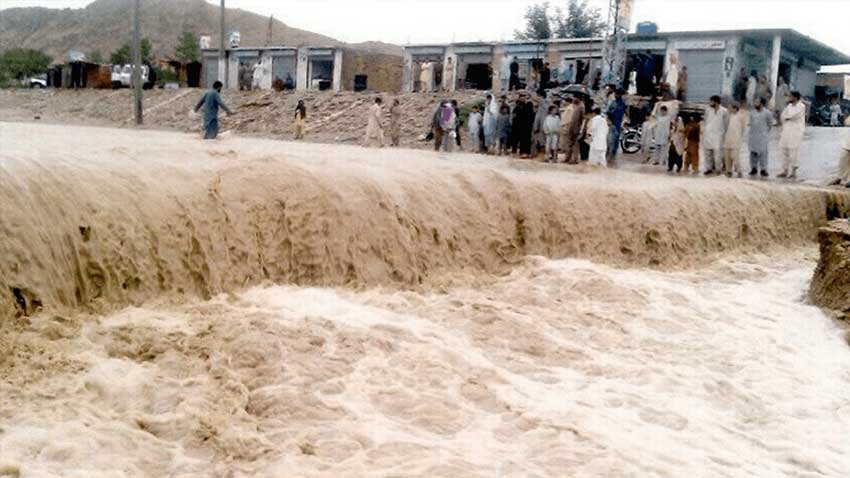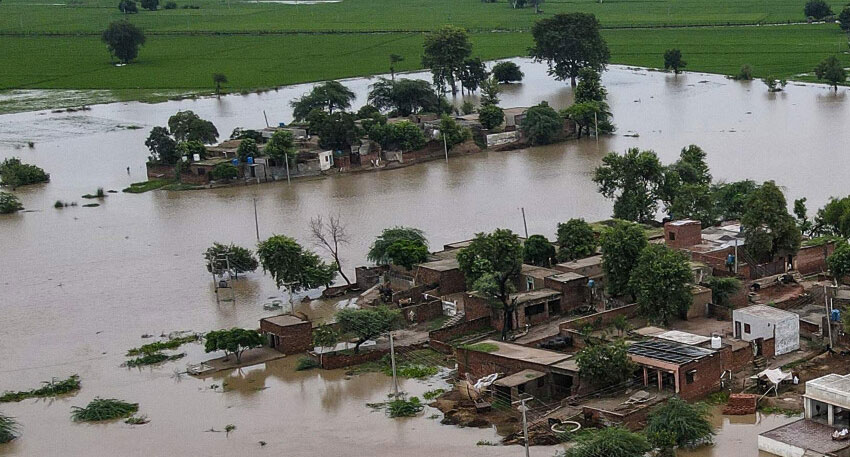
After India released huge volumes of water, River Chenab recorded a high-level flood at Qadirabad where a historic flow of more than 1,017,000 cusecs was measured. The district administration confirmed that around 950,000 cusecs had already passed Qadirabad, surpassing the 2014 record and marking the largest flood in history at this site.
Pakistan Army troops rushed to Qadirabad barrage as protective embankments collapsed under pressure. Rescue teams reported that more than 35 nearby villages were submerged, forcing evacuations of families in Nur Pur, Kalashadian, Bahri, Kak Shal and Chak Abdullah. So far, 200 people have been rescued to safer locations.
Authorities established five flood camps and nine boating points along the riverbanks. The army, Rescue 1122, health officials and district administration are on high alert. But with India continuing to push water downstream, the danger remains critical.
At Head Balloki, River Ravi also witnessed a dangerous rise. The inflow reached 90,770 cusecs against an outflow of 78,870 cusecs, creating a medium flood. Officials warned that the next 12 hours are decisive, and thousands of residents with livestock are being shifted to safer ground.
The situation worsened in Gujrat when the Shahbazpur embankment broke, flooding residential areas. Tragically, three children drowned, with rescue teams saving one but two cousins—Abdul Rauf, 13, and Samiullah, 12—lost their lives.
In Pakpattan, the Sutlej River’s furious waves destroyed protective dikes, washed away mud houses, and submerged thousands of acres of ripe crops. Power outages and blocked roads added to the misery of residents already cut off from surrounding towns. Farmers suffered devastating losses as standing crops disappeared under the water.
Read more: Hafizabad villages submerged as Chenab River protective dyke breached
Meanwhile, in Kamonki, a 200-foot breach in the Dek Nullah inundated vast farmlands, sweeping away more crops and threatening nearby villages like Inayatpur and Mosa Seto.
The Punjab Disaster Management Authority (PDMA) reported that under the directions of Chief Minister Maryam Nawaz, relief operations have been expanded. Extra tents, boats, life jackets, and medical supplies were sent to Sialkot, Gujrat, Mandi Bahauddin, Hafizabad, Chiniot, Narowal, Sheikhupura, and other affected districts. Over 150,000 people and 35,000 animals have already been shifted to safer zones.
Chief Minister Maryam Nawaz chaired a four-hour emergency meeting with senior ministers and officials, reviewing relief efforts. She directed hospitals to stay on high alert, ordered immediate provision of medical and veterinary facilities in flood-hit areas, and called in army support across seven districts including Lahore, Kasur, Sialkot, Narowal, Faisalabad, Okara and Sargodha.
This flood crisis highlights once again how India’s reckless release of water across the eastern rivers poses a direct threat to Pakistan’s people, agriculture and infrastructure. While Pakistan’s army, PDMA and rescue agencies are working tirelessly to save lives, India’s water aggression has exposed the vulnerability of millions living along the river belts.
The unprecedented surge in River Chenab at Qadirabad shows that this is not a natural disaster alone but the result of hostile upstream policies. Pakistan’s quick mobilization of army, rescue services, and relief camps reflects resilience, yet the long-term solution lies in holding India accountable under the Indus Waters Treaty and strengthening Pakistan’s flood management systems.




